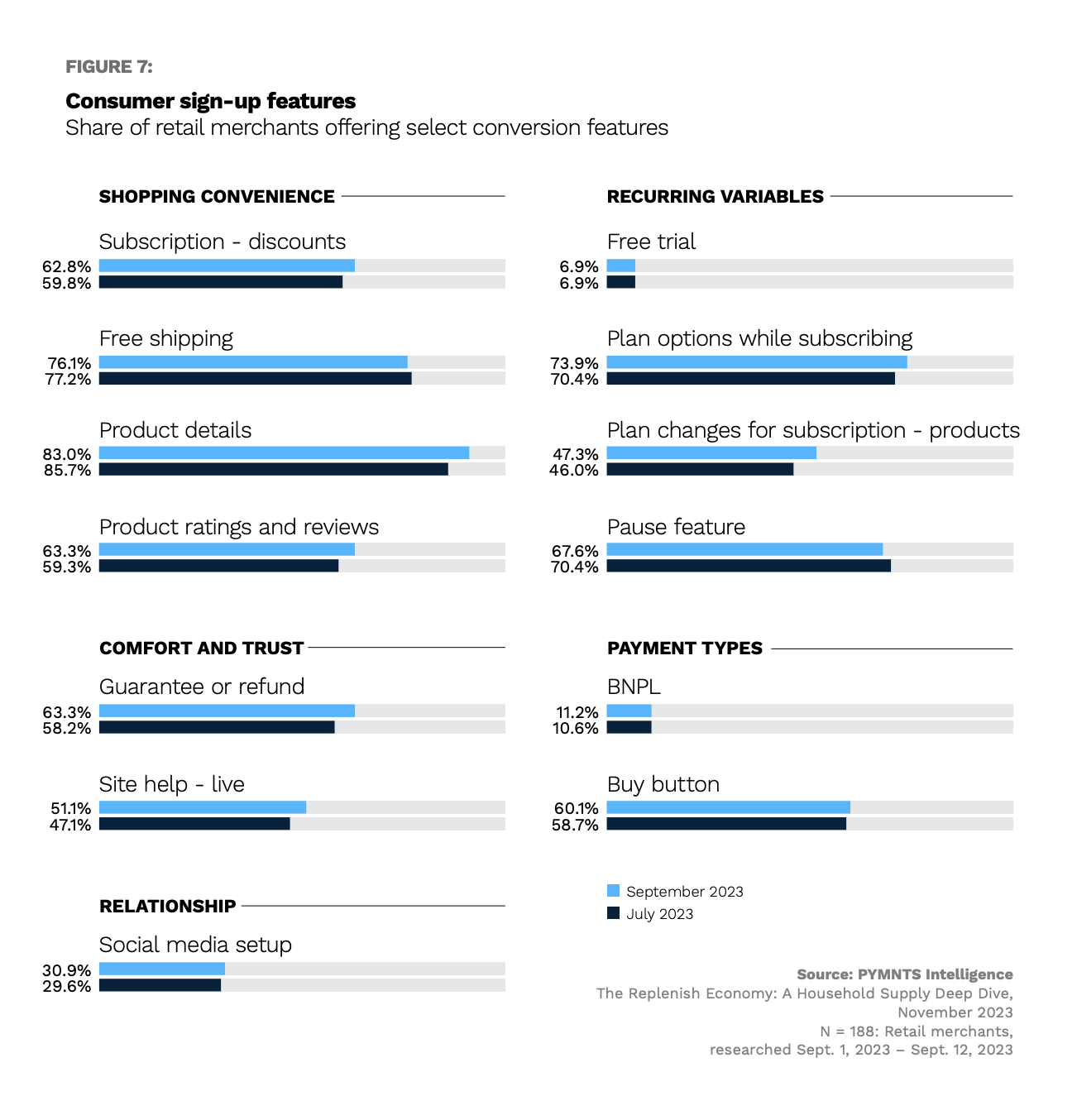Subscription Merchants Implement BNPL to Woo Budget-Strapped Consumers

More subscription merchants are offering buy now, pay later (BNPL) options to attract budget-constrained consumers, PYMNTS Intelligence finds, with the share increasing by the month.
By the Numbers
The PYMNTS Intelligence study “The Replenish Economy: A Household Supply Deep Dive,” created in collaboration with sticky.io, draws on data from a survey of more 180 subscription merchants to understand the impact of retail subscriptions on consumer shopping habits.

The report notes “a 2.3 percentage point increase in the share of firms implementing BNPL options.” Now, 11% of all subscription merchants included in the study now offer this feature to their customers. This rise in BNPL options highlights the growing demand for flexible payment solutions in the subscription commerce industry.
The Data in Context
BNPL allows consumers to make purchases without the immediate financial burden, which is especially appealing during uncertain economic times. Additionally, these options eliminate the need for credit checks, making it accessible to a wider range of consumers. This inclusivity plays a significant role in attracting customers who may not have access to traditional credit options.
BNPL company Affirm shared in its last earnings report that active customers surged 15% to 16.9 million, while transactions per average consumers gained 25% to 4.1 million. Plus, Klarna said in its last financial report that it saw a 32% increase in its customer base, with the platform now reaching 37 million consumers in the U.S., and a 38% rise in retail partners, reaching 26,000.
“Whatever calculus the user performs to determine the payment methods that they want to use, they want more options across more merchants,” Drew Olson, senior director at Google Pay, told PYMNTS CEO Karen Webster in an interview.
He added that offering those choices can help increase merchants’ revenues, with Affirm noting that merchants using its offerings report 60% higher average order values versus other payment methods.

